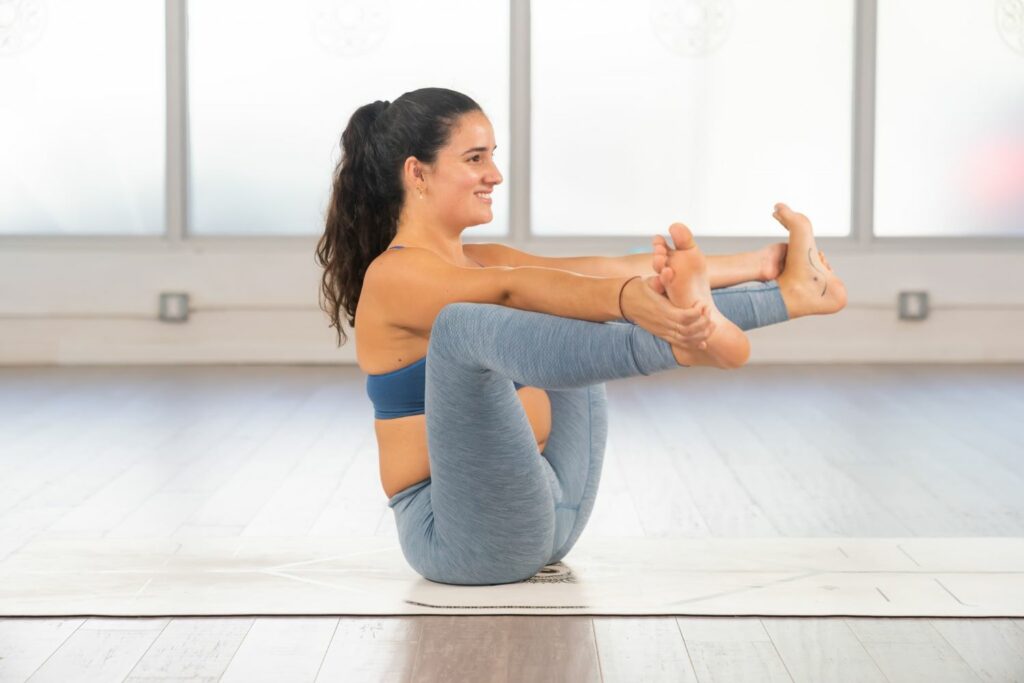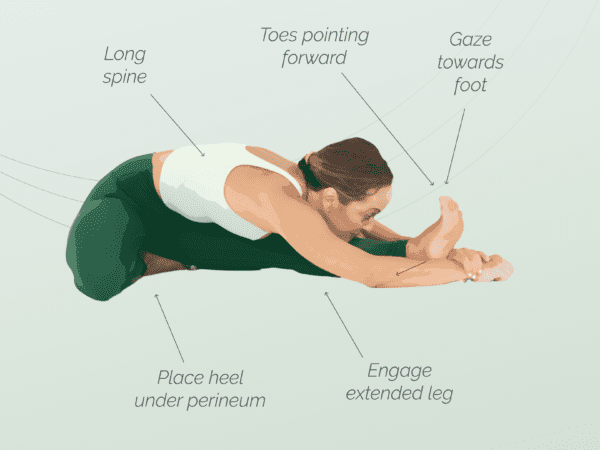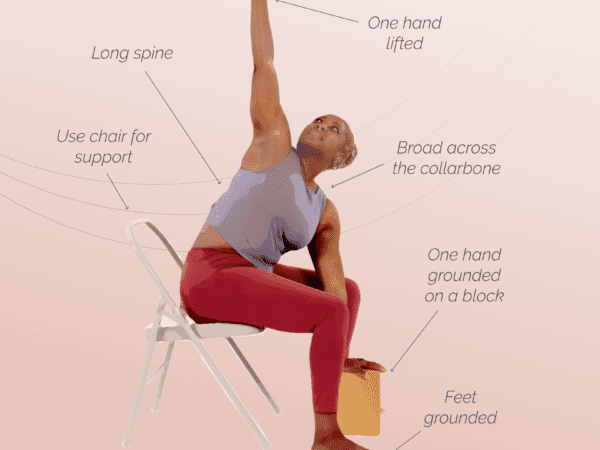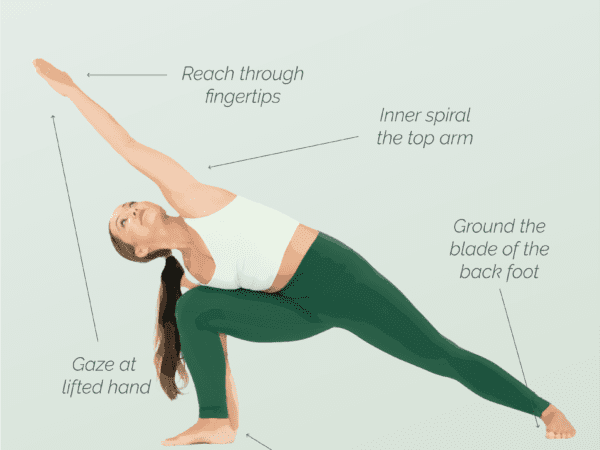Whether you’re a seasoned yogi or just starting out, upavisthsa konasana B the Sanskrit name for upward seated straddle pose is a great way to stretch your inner thighs, hips, and lower back. This pose is included in the Ashtanga primary series and may look intimidating at first, but with some guidance and practice, it can become a comfortable and relaxing part of your yoga routine. In this post, we’ll go through the steps to help beginners get started with Upavisthsa Konasana B. Let’s begin!
What are the benefits of doing Upavisthsa Konasana B?
Seated wide-legged straddle pose offers numerous benefits. This asana is an excellent way to stretch and strengthen the hamstrings, inner thighs, and hip muscles. Including it in yoga sequences will help in improving flexibility, balance, and reducing stress and anxiety levels.
Other benefits include the following:
1. Improves digestion: This asana stimulates the abdominal organs, which helps in improving digestion and reducing constipation.
2. Enhances blood circulation: Seated Wide-Legged Straddle Pose improves blood circulation in the body, particularly in the lower body, which helps in reducing swelling and leg cramps.
3. Reduces stress and anxiety: Practicing Upavisthsa Konasana B helps in calming the mind and reducing stress and anxiety levels. It also helps in promoting better sleep.
4. Strengthens lower back muscles: This asana strengthens the lower back muscles, which helps in reducing lower back pain and improving posture.
5. Tones the pelvic floor muscles: Seated Wide-Legged Straddle Pose helps in toning the pelvic floor muscles, which helps in reducing urinary incontinence and improving sexual function.
What are contraindications for Upavisthsa Konasana B?
Before we begin, it’s important to note some contraindications for Upavisthsa Konasana B. If you have a lower back injury or hamstring injury, it’s best to avoid this pose or modify it with the help of a yoga instructor. If you are pregnant, it’s best to avoid this pose or modify it with the help of a yoga instructor.
Are there any precautions that one should take when doing Upavisthsa Konasana B?
Yes, there are some precautions that beginners should take when practicing upavistha konasana B. Here are some tips to keep in mind:
1. Warm-up: It is essential to warm up your body before practicing any yoga pose. You can do some light stretching, a short vinyasa sequence like sun salutations, or any other warm-up exercises to prepare your body for the pose.
2. Don’t force yourself into the pose: As a beginner, it is crucial not to force yourself into the upavistha konasana B. Listen to your body and go only as far as you feel comfortable. You can gradually deepen the pose with regular practice.
3. Use props: You can use straps to prevent any strain on your hamstrings if they aren’t flexible enough for you to grab your feet.
4. Avoid rounding your back: While performing the pose, make sure to keep your spine straight and avoid rounding your back.
5. Don’t hold the pose for too long: Upavistha konasana B can be a challenging pose for beginners, and it is essential to take breaks if you feel discomfort or strain. Don’t hold the pose for too long and rest if necessary.
By following these precautions, beginners can practice Upavistha Konasana B safely and effectively.
Steps to do Upavisthsa Konasana B:
1. Begin by sitting on the floor with your legs extended in front of you.
2. Slowly spread your legs apart as wide as you can comfortably go but not so wide that you can’t fold forward.
3. Flex your feet and engage your thigh muscles by pressing your heels into the ground.
4. Inhale and lengthen your spine, ensuring your back is straight.
5. Exhale and lean gently back while bringing your legs up. Don’t kick up with a lot of energy but instead allow your legs to lift.
6. With your hands hold onto the outer edges of the feet.
7. Lift through the chest and look up. Engage your core to stay balanced.
8. Hold the pose for 5 breaths.
Watch this video with Kino for more about how to do upavisthsa konasana A and B.
What modifications can be made to Upavisthsa Konasana B?
If you’re a beginner yogi struggling with upavisthsa konasana B there is a modification you can make to make the pose more accessible and comfortable for your body. This pose mainly targets the hamstrings, so it’s essential to ease into it to avoid any strain or injury.
If you can’t comfortably grab your feet, one of the variations you can try is keeping your knees bent in the pose.

What should one do after completing Upavisthsa Konasana B?
Congratulations on completing Upavisthsa Konasana B! You’ve just completed a challenging and beneficial yoga pose for both your body and mind. Now it’s time to relax and give your hamstrings some much-needed rest.
Here are a few things you can do after completing the pose:
1. Take a few deep breaths: Sit comfortably and take a few deep breaths, focusing on your inhales and exhales. This will help you relax and release any tension in your body. You might want to take a moment to do some meditation.
2. Do a gentle forward fold: While seated, gently fold forward, reaching your hands towards your feet or the ground. Let your head hang heavy and breathe deeply for a few breaths.
3. Stretch your legs: Extend your legs straight out in front of you and gently flex and point your feet a few times. This will help release any tension in your calves and ankles.
4. Take a break: If you feel like you need a break, take a few moments to rest in Savasana (Corpse Pose). Lie down on your back with your arms and legs extended and let yourself fully relax.
Remember to always listen to your body and do what feels good for you. If you experience any pain or discomfort, back off or modify the pose as needed. With patience and practice, your hamstrings will become more flexible over time. Keep up the great work!
Sign up for Omstars to get access to more yoga classes and tutorials. Get the support you need for your at-home yoga practice.










